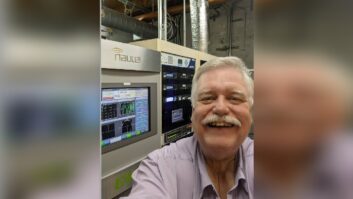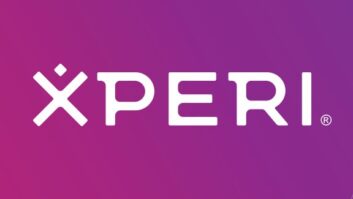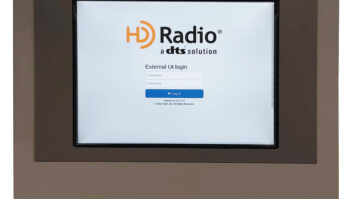
Mark Ramsey Media strategist Mark Ramsey has made a name for himself by looking at media, radio in particular, from the consumer’s perspective. He has long been a critic of HD Radio, headlining a recent blog post with a photo of a tombstone engraved with the name of the technology.
HD Radio has been the standard for U.S. digital broadcasts since 2002 and has drawn its share of adversaries. Its advocates continue to promote it to car manufacturers, the public and radio stations.
The recent news that General Motors would not be including HD Radio in some models next year raised the question of whether the format may be losing momentum. GM and iBiquity have described the move as temporary, as RW’s Leslie Stimson has reported. But Ramsey says the best thing that consumers and broadcasters alike can do with HD Radio is to forget about it.
RW spoke with the media analyst to find out why he has been a vocal skeptic.
IN THE DASH
Interest in car infotainment systems has exploded in recent years. A post in 2014 from Bob Struble, president and CEO of HD Radio supplier iBiquity Digital, notes that five years ago, no car makers exhibited at CES; by last January, nine of the top 11 automakers had booths. The enhanced display screens in new cars, according to Struble, are being promoted as prime visual real estate that needs to be filled. Analog radio presents a blank screen, deemed by some to be no longer competitive.
Some car manufacturers argue that HD Radio is the answer to radio’s dashboard challenge. Ramsey disagrees.
“It’s not the consumers who are telling Ford, ‘We want HD Radio.’ That clarion call is coming from somewhere else — probably from a company which stands to gain lots if HD becomes an industry standard and has everything to lose if it doesn’t.”
A 2014 open letter from Ford’s Jim Buczkowski argues that radio’s audience in the connected car will jump ship for the alternatives if it doesn’t embrace the key technological features of HD Radio, namely digital sound quality, the added display of track and artist names, iTunes song tagging, the potential for album art or other graphics, plus the promise of creating additional channels.
Ramsey differs: “First point, the audience is going to slip away to those alternatives no matter what. Of course, some of those digital alternatives can and will be your own. What is iHeartradio after all, but one big digital alternative, powered by radio? Ditto for TuneIn. And yes, your own station’s app is in there too.”
As to the value of matching the most important competitor features, Ramsey asks: “Does anyone out there really believe that ‘digital sound quality’ is what makes listeners tune in to Sirius XM? Or that song tagging is what appeals about Pandora? Or that album art is why Spotify would be a go-to choice? Or that the consumer is lacking ‘additional channels’ when you add in the infinite number of channels online radio already provides? Come on now.”
He feels that HD Radio doesn’t improve features that already draw people to the medium. “HD Radio doesn’t make radio more timely or more helpful in an emergency or funnier in the morning or more a companion during the day. It doesn’t make the songs better or the commercial breaks shorter. It doesn’t reflect your life or your community. It doesn’t make you laugh or cry. It doesn’t tell you the best route to work or what to wear in the morning. It doesn’t nourish your spirit or salvage your nest-egg.
“HD Radio doesn’t do any of these things because these things are about what we create with radio, not just about the technology which surrounds it.”
Regarding the connected car, he said control of the entire dashboard itself is up for grabs. “There is an effort to standardize the interface between different types of cars in order to end a lot of the confusion. But there is another camp, led by Android and [Apple], who want to control the digital dash from mobile devices. If they win out, the issue of the car as a separate environment will simply go away.”
SOLVE PROBLEMS
Does all of this mean that Ramsey is a content guy who dismisses technology? Not at all.
“We can absolutely make radio better with technology. Ultimately, technology and content will merge into one value continuum. But sacrificing the latter to favor the former will make radio weaker, not stronger. Technology needs to be something that solves a consumer problem.”
For example, Ramsey cites Uber, the app-based transportation network and taxi company that enables users to get a ride quickly in major cities worldwide. “This service is unbelievable, and very quickly solves the problem of getting a cab in a city you’re unfamiliar with.
“All advertising is directed to solve a consumer need or problem. But if I don’t have a radio problem, then I don’t need a radio solution.”
He assailed the selling points he’s heard: “‘HD is digital.’ That does not solve a problem for consumers. ‘The audio is better.’ Same deal. ‘HD provides more choices.’ So do Spotify, Pandora, Slacker and a host of others, and with 21st century technology. In short, HD Radio is a ’90s solution to a 21st century problem. It does a lot of the same things as the alternatives, it just doesn’t do them any better.”
Ramsey said broadcasters seem to be willing to spend money on radio but often for the wrong reasons or on the wrong things. “They would rather spend $100,000 on the technology to upgrade a signal, than spend that money on getting the best talent in town. That’s a shame, because no one listens to the radio for technology, they listen for the personalities, because the songs are freely available everywhere now.”
He cited a recent survey. “Listeners were asked to name a radio DJ or host. The youngest named was Ryan Seacrest, at age 40. Most of the rest, such as Dick Clark or Wolfman Jack, are all dead.”
And finally, to broadcasters feeling the pressure from an increasing number of media alternatives, Ramsey suggests they step back and think about what business they are really in.
“The opportunities are not in expanding the number of channels you have. Instead, you’ve got to put yourself in the shoes of your listeners, and ask yourself what you can do to solve their problems. How can you add value to their day, and make their lives better? And then you’ve got to take all of this and leverage these relationships with the audience, and leverage relationships with the advertisers. Then you can connect the two more efficiently across any number of platforms, not just radio.”
Ramsey concludes with one question for management: “What business are you in? Broadcasters are in the connection business. They’re in the content business, and the people business. They are not in the radio business, much less the HD Radio business.”
Ramsey’s website is markramseymedia.com. Comment on this or any article. Write to[email protected].
For more views and news about HD Radio, read the free eBook “What’s Next for HD Radio 2015” at radioworld.com/ebooks.











